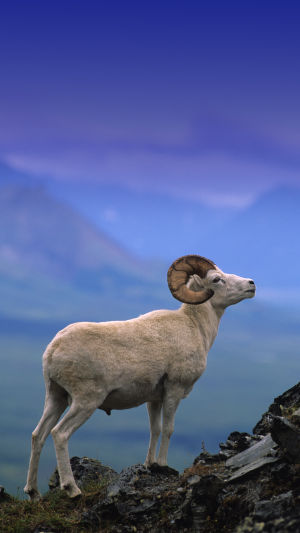The goat is one of the earliest domesticated animals. It is thought that humans domesticated goats during the Neolithic period more than 10,000 years ago.
The geographical distribution of goats is very wide, all over the world. Wherever livestock is raised, goats are distributed. Even in areas where other livestock is hard to live, goats can survive and breed. Its distribution area is second only to the dog, becoming the most widely distributed among all kinds of domestic animals.
Modern goats were domesticated from wild goats. Archaeological excavations prove that goats in Central Asia were domesticated as domestic animals as early as 5700 BC. Goats belong to one of the weaker families in the animal kingdom, so they became the earliest domesticated animals. So there is no definite answer to the question of its origin.
It is generally believed that the ibex became the domestic goat and had been domesticated in the Neolithic Age. Most scholars believe that the ancestors of the domestic goat are probably the Priska sheep, the horned sheep, and the European wild sheep.
Goats are the most widely distributed of all livestock and are found all over the world. According to the statistics of the Food and Agriculture Organization of the United Nations, there are 435,352,000 goats in the world, of which 89.1% are distributed in Asia and Africa. India has the largest number of goats in the world in terms of the countries that raise them.
Goats are very active. In summer, when water and grass are abundant, goats move within a radius of about 3 kilometres. In winter, when the water is cold and the grass is dry, the goats can travel as far as 6 kilometres.
Strong mobility can ensure that goats get more and better feed than other livestock to meet their nutritional needs. The goat is more naughty, running jumping, and climbing is its unique biological characteristics. In the house, goats like to stand, lie down and rest in high places. In the mountains, goats can walk on rocky slopes and even cliffs that are inaccessible to other livestock. Goats can also stand upright on two hind legs and fully graze the higher thorn thickets.
Goats eat wide, especially like to eat branches and young leaves. Over a day, leaf feeding accounts for 90%. The salivary glands of goats secrete a large amount, of neutralizing and detoxifying tannic acid in plants, ensuring that goats can eat a large number of protein-rich leaves. Effective digestion, absorption, and utilization without tannin toxic side effects.
Goats like to dry, love to clean, drink water, forage, feed, and utensils, and should always keep clean health. The goat's brave and aggressive habit helps it defend itself against enemies. It also increases the difficulty of management. In production, it can take measures such as separating the circle and closing the feed or removing the Angle according to the specific situation.
Goats are thin and have long limbs to look flexible. Sheep, on the other hand, are stout and have short and strong limbs. Look honest and lovely. Goat hair is a thin hard bristle with a layer of downy hair underneath. Sheep, on the other hand, has a soft, thick, shiny coat.
Goats mostly have more developed horns that splay out and look aggressive, whereas sheep have stubby horns that look blunt. In addition, goats mostly have a strong odour, whereas sheep have a light odor. All goats have goatees, but sheep don't have beards.
The tail of a goat is shorter and often upturned, whereas the tail of a sheep is longer. If you pay attention, you will find that goats like to eat salt grass; there are several reasons for this.
Add trace elements to accelerate growth. Sheep chronically deficient in salt are prone to all kinds of diseases. Lambs are not only stunted but also prone to bone weakness.
It's good for your sheep's metabolism. Salt can regulate the acid-base balance in sheep, and also plays an important role in controlling water metabolism. Sheep's growth and development is a process of metabolism, and salt is an indispensable substance in their development process.
Aid digestion and increase appetite. People often drink salt water to help digestion and improve the effect of appetite, sheep are the same.





